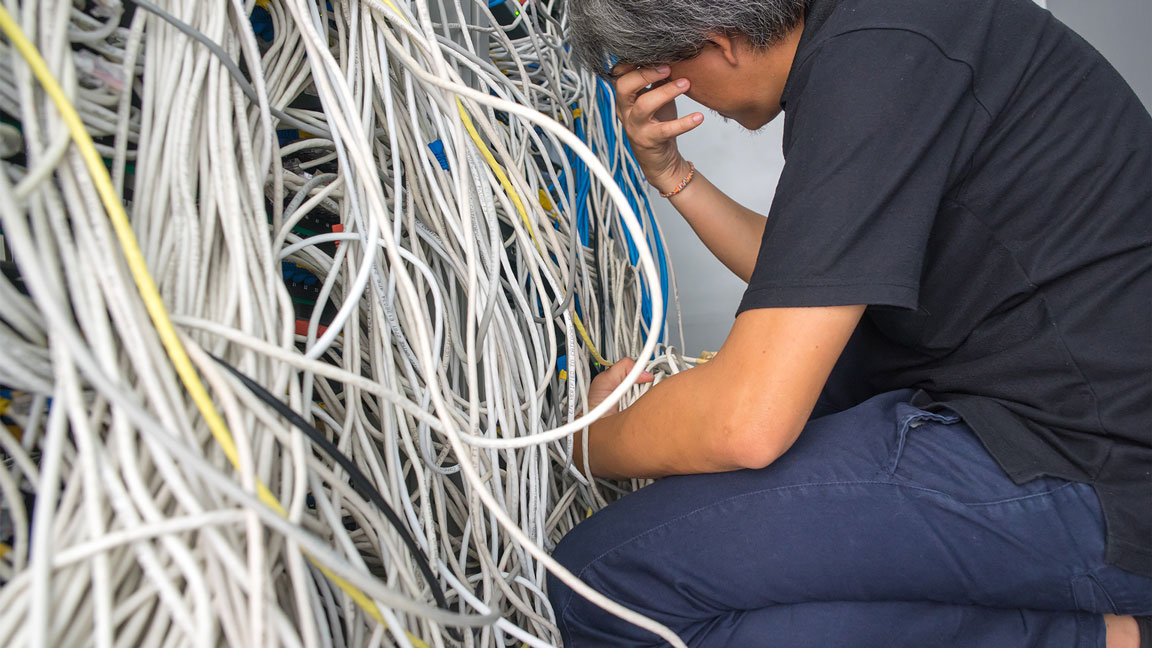Network Visibility Products
Garland Technology ensures complete packet visibility by delivering a full platform of network TAP (test access point), inline bypass and packet broker products.
Visibility Solutions
Garland Technology is committed to educating the benefits of having a strong foundation of network visibility and access. By providing this insight we protect the security of data across your network and beyond.
Resources
Garland Technology's resource library offers free use of white papers, eBooks, use cases, infographics, data sheets, video demos and more.
Blog
The TAP into Technology blog provides the latest news and insights on network access and visibility, including: network security, network monitoring and appliance connectivity and guest blogs from Industry experts and technology partners
Partners
Our extensive technology partnership ecosystem solves critical problems when it comes to network security, monitoring, application analysis, forensics and packet inspection.
Company
Garland Technology is dedicated to high standards in quality and reliability, while delivering the greatest economical solutions for enterprise, service providers, and government agencies worldwide.
Contact
Whether you are ready to make a network TAP your foundation of visibility or just have questions, please contact us. Ask us about the Garland Difference!
Upgrade Cabling without Blowing the Budget

It never fails. You’re in a hurry, running late. You’re driving too fast when, suddenly, a speed bump. What was designed for safety has now created fury, as your not-so-decaf coffee instantly repaints the car’s interior an unflattering shade of java.
It’s difficult to find fault in speed bumps until they delay your urgent progress to daycare or date night.
At Garland, we’re regularly hearing from network engineers encountering their own version of speed bumps. They share with us about delayed installations of new NDR, IDS, SIEM, Lawful Intercept, or DLP devices due to minor, unexpected issues.
Speed bumps slow down deployments and prevent networks from benefiting from new monitoring and security protections.
One of the most common speed bumps we hear about is unforeseen cabling upgrades.
When network speeds increase, there’s a domino effect, as other components of the network architecture have to also be upgraded for compatibility.

For example, when multimode fiber speeds increased from 10Gbps to 40Gbps, the SFP+ transceiver had to be upgraded to the QSFP+ transceiver. In addition, the cabling required also changed: the LC fiber cables that worked with SFP+ SR transceivers no longer worked with QSFP+SR4 that needed MTP/MPO cabling.
For a company upgrading their network from 10G to 40G, this meant an entire rip-and-replace of their multimode cabling. Ouch!
Thankfully, a workaround was developed. After a few too many Mountain-Dew-fueled all nighters, the brilliant engineering minds arrived at a solution: bidirectional (BiDi) transceivers. These enabled 40G throughput across existing LC cabling.
BiDi Transceivers
By using two different wavelengths, each strand of fiber in a LC cable is able to both send and receive traffic at a rate of 20G. While equipment upgrades that supported open QSFP+ cages and new BiDi transceivers were still required, existing cabling infrastructure could be used.
If you’re still at 10G speeds within your network today, BiDi is a consideration. Before you make a decision, know that there are other upgrade methods that also make use of existing infrastructure.
SWDM Transceivers
Transceivers that use Short Wavelength Division Multiplexing (SWDM) make use of four wavelengths at once. Instead of having each strand of fiber both sending and receiving traffic, the four wavelengths are unidirectional, either transmitting or receiving traffic.
Each wavelength transmits at either 10G or 25G, allowing for 40 to 100 Gbps speeds. The networking appliances will still need QSFP+ transceivers, but the existing LC cabling can, again, be left in place.

SFP28 - 25 Gbps:
In a lot of cases, the jump to 40G may be completely overkill for the needs of the network. Instead, 25G using SFP28 transceivers could be a much better fit for a network.
Contrary to BiDi and SWDM, SFP28 uses the SFP+ form factor instead of the QSFP+, allowing it to fit in the considerably smaller SFP+ cage.
Now, this doesn’t mean you can shove an SFP28 transceiver into an SFP+ cage and expect 25G. No, no, no.
The appropriate networking devices that support SFP28 ports would need to be installed, but the good news is you will often get much higher port density of SFP28 than you will with the QSFP+ form factor.
Even though 25G is slower than 40G, SFP28 does provide another benefit in addition to density: backwards compatibility. The SFP28 can connect to existing 10G SFP+SR transceivers by throttling itself down to the 10G line rate.
The Tradeoff
Making use of existing cabling infrastructure can save considerable amounts of money and installation costs, but putting higher speeds over older cabling does come at a cost: distance.
Moving to higher speeds in this manner will work perfectly when devices are close together, but may experience issues when trying to link over 100 meters.
The quality of the fiber cable in place will determine how far these links will be able to go. OM3 will be supported, but will offer the shortest link distances. As network speeds continue to increase, an upgrade to OM4 or the latest OM5 may eventually be required.

Stuck on a speed bump?
Next time an unforeseen cabling upgrade threatens your project, give us a call. We have experience bustin’ up speed bumps and getting installation projects back on the road to success, at full speed.
Written by Jason Drewniak
Jason Drewniak is the Vice President of Marketing and Business Development at Garland Technology in the Buffalo, New York office. His experience building brands and delighting customers covers a variety of tech-forward products like computers, toys, and beer. At Garland he is responsible for educating network stakeholders about the "Garland Difference!"
Authors
Topics
- IT Security (200)
- Network TAPs (139)
- Network Monitoring (134)
- Hacks and Breaches (87)
- Network Management (81)
- Network Design (73)
- Industrial OT (71)
- Technology Partners (63)
- Network Infrastructure (59)
- Inline Security (49)
- TAPs vs SPAN (47)
- Network Packet Brokers (41)
- Data Center (37)
- Cloud Solutions (33)
- Software Defined Networking (SDN) (24)
- Events & News (20)
- The 101 Series (19)
- Federal (17)
- Cisco Solutions (16)
- Wireshark (14)
- DesignIT (13)
- Healthcare (11)
- MSP/MSSP (9)
- Palo Alto Networks (8)
- Finance (7)
- Troubleshooting (5)

